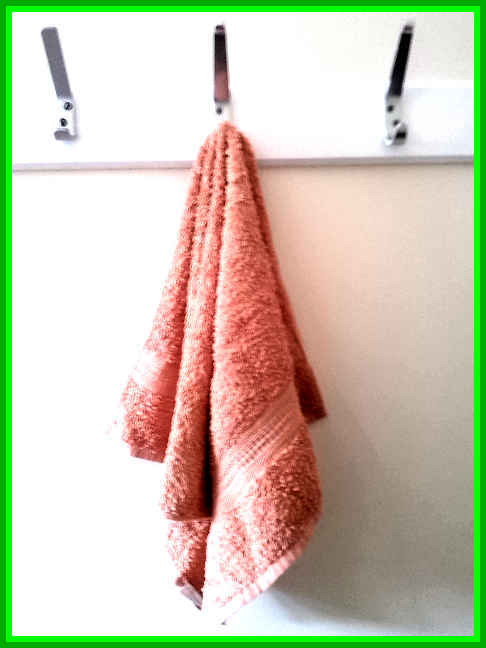Gadgets and appliances
Gadgets
There must be some folk with limited grip strength or medical issues, some of whom might find a battery-powered electric pepper mill a great idea. But many people would probably manage well enough with a manual one.
We need to think about the gadgets that clutter our lives and involve the use of carbon-fuelled energy to operate them, plus the CO₂ footprint involved in making them. Perhaps it would be good to walk through our homes, especially our kitchens, to review our kit. Does some of this stuff deserve a trip to the charity shop – or even the bin ?
- How often does this gadget get used ?
- How much carbon and energy does it require ?
- Does a clever kitchen gadget take 30 seconds to use, then 30 minutes to clean ?
- How long is it likely to last ?
- What alternatives exist ? Example: A coffee cafetière is a lot simpler and cheaper than a machine and probably uses far less energy, both to manufacture and to use.
How many devices around our homes waste energy on standby ? If your living spaces look like they are infested with LED fireflies, maybe it’s time for a cull.
Some stuff is useful. Having an accurate kitchen scale helps reduce waste. Measuring water for drinks and cooking can reduce energy usage. A small kettle to make individual cups of tea/coffee uses less energy than a large one. A thermos flask saves a lot of money on take-away drinks as well as avoiding single-use plastic or paper cups. If you are monitoring your heating systems, fridge, freezer, or indeed body temperatures, an infra-red thermometer is really handy.
Is there a gadget or other item that you only need short-term, perhaps a special event ? If so, can you borrow it, hire it, share it, pass it on when you have finished with it ?
Batteries
Try to avoid using disposable batteries (smoke alarms excepted; the cost/risk balance favours alkaline cells) – they have a huge footprint compared to mains energy, especially “Pill” cells. Be aware that many items that charge internal batteries use circuit board-mounted lithium cells. These are efficient, but when they fail it may be hard/expensive to replace them and hence the whole device is discarded just because the battery has failed. Choose designs that use standard, easily replaceable, batteries.
If you are buying familiar (AA or AAA) rechargeable batteries, look out for the “Hybrio” type. They are seldom seen in shops, so search online. They hold their charge much longer than the popular nickle-metal hydride (NiMH) versions, saving energy and the frustration when the usual ones go flat between uses.
When batteries reach the end of their lives, dispose of them by recycling, not in landfill waste. There are battery disposal bins in most good retailers.
Appliances
Fridges and freezers
Fridges and freezers use more energy than people realise. Choose a model with a good energy efficiency rating. Keep the interior ice-free and the condenser coils (at the back) clean from dust and such. Make sure that air can circulate freely around the condenser coils to dissipate extracted heat. Where possible, try to locate fridges and freezers in cool places, away from heat sources and direct sunlight.
Check the labels on your foods and assess the temperature you need to maintain. Measure with a thermometer. Turning the thermostat down to a higher temperature/lower power makes a large difference to the energy use, but do not compromise on food safety, also then risking waste of food due to spoilage.
Cookers
As we press for the decarbonisation of our electricity distribution grid, we should give preference to electric cookers over gas. A good energy rating helps reduce energy use. Heating an oven takes far more energy than a hotplate or cooking in a microwave. Shallow frying is usually quicker and more efficient than boiling. If you need an extra cooking device then an induction hob, heating the metal of a pan directly, saves at least a third of the energy, though you will need compatible steel/iron cookware so the savings/carbon payback time can be a couple of years of frequent use.
Washing machines
Again, choose a good energy rating. See further suggestions on our Clothes Fabrics and Shoes page – especially, avoid using a tumble dryer – they take far more energy than the washing process. Keep stuff in the basket until you have a full load.
Dishwashing …
Use an eco-friendly washing up liquid. Try to reduce the amount and temperature of the water used. Rinse using cold water under the tap.

Sorted, Yes !
Oh, OK then. Some folk have dishwashing machines. Try to choose an efficient one. Use a low energy programme and eco-friendly materials. Wait for a full load. Consider washing easy items by hand to stretch the intervals between machine washing sessions.
Entertainment products and technology
Buy efficient kit. Do you really need a television the size of a football goal ? The bigger they are, the more energy they are likely to use.
Turn off standby power when equipment is not in use, including peripheral devices and routers. At home and at work, run laptops on mains power, saving energy and lengthening the life of their batteries. Do you really need to upgrade frequently, especially phones ? Electronic equipment usually has a massive carbon footprint during manufacture. Can old kit be recycled, repurposed or passed on to new users via Freegle, charities or similar organisations ?
Take a wander through your home and look for other stuff that you think you cannot do without, like a hair dryer ….

If you really need to use an electric one, consider choosing one with a “cold” setting – which really means room temperature of course – and combing your hair while it dries, helping the air to flow through it.
The bottom line
What do we really need ?
Let’s junk the junk

